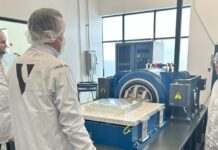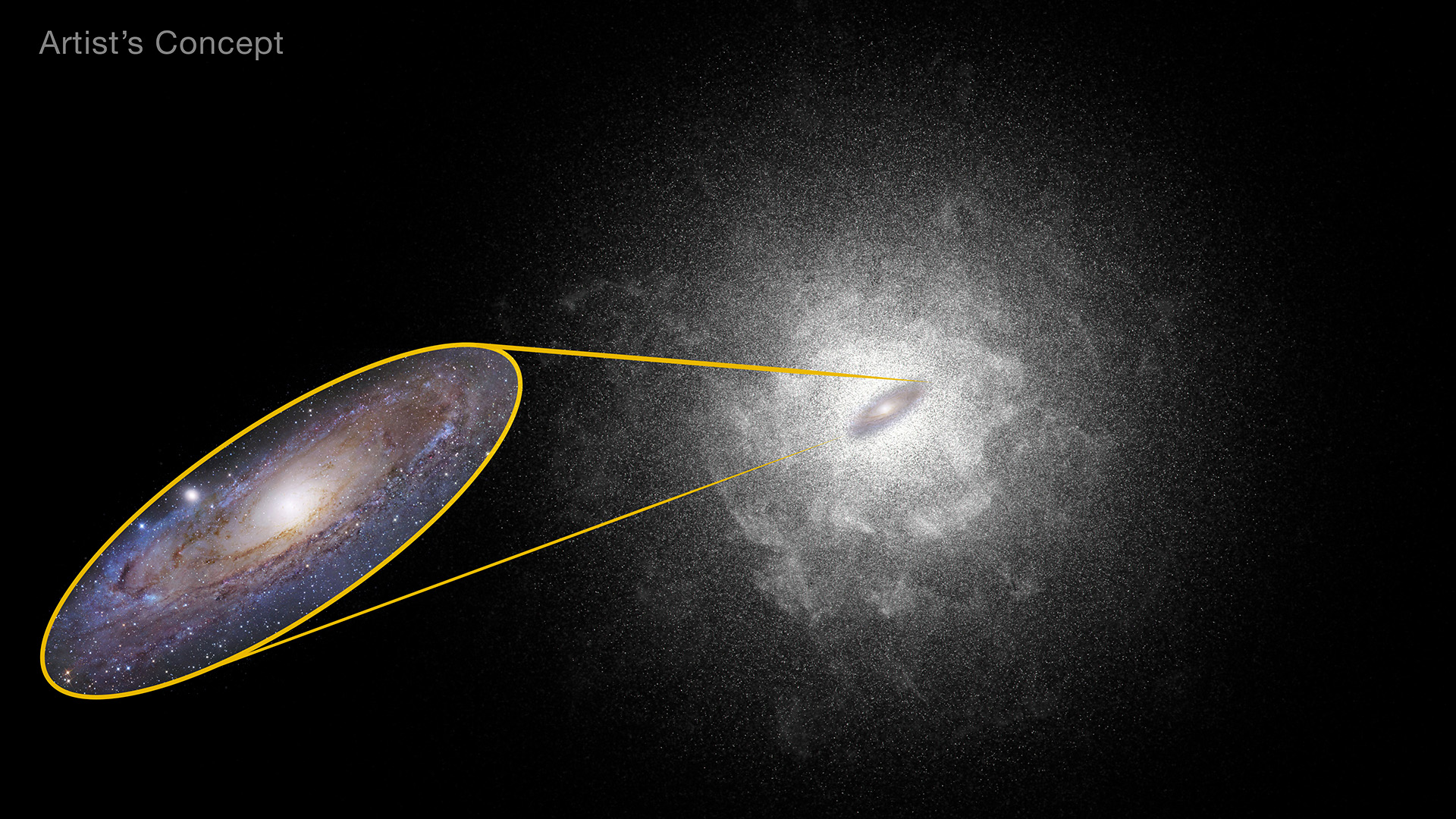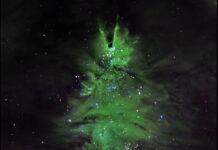Unveiling the Universe’s Secrets: NASA’s Roman Space Telescope and the RINGS Survey
The cosmos is a vast, dynamic entity where galaxies constantly evolve, merge, and transform over millions to billions of years. Unfortunately, our human lifespan can only capture fleeting glimpses of these grand cosmic events. Traditional telescopes provide snapshots of the universe, often leaving much to the imagination. However, hidden within galaxies are clues to their past, offering insights into their formation and evolution. NASA’s upcoming Nancy Grace Roman Space Telescope is set to change the way we explore these celestial fossils with its advanced capabilities.
The Roman Space Telescope and RINGS Survey
NASA’s Nancy Grace Roman Space Telescope, set to launch by May 2027, promises to revolutionize our understanding of the universe. It will be equipped with high-resolution imaging capabilities, particularly adept at capturing the intricate details of galaxies in the nearby universe. One of the exciting proposed initiatives for the Roman telescope is the Roman Infrared Nearby Galaxies Survey (RINGS). While still a preliminary concept, RINGS aims to provide astronomers with valuable tools and data to study the history of galaxy formation.
The Roman Space Telescope boasts a resolution comparable to NASA’s Hubble Space Telescope but with a significantly wider field of view—200 times larger in the infrared spectrum. This combination makes Roman an exceptional tool for surveying the sky, complementing Hubble’s more focused observations.
Galactic Archaeology: Unearthing Cosmic Fossils
Understanding the formation of galaxies is akin to piecing together a complex puzzle. Scientists can only observe brief moments in the lives of evolving galaxies, making it challenging to track their development. However, galaxies leave behind “fossils” in the form of ancient star structures, much like how organisms on Earth leave imprints in rock. These cosmic fossils hold the key to understanding the history and evolution of galaxies.
Robyn Sanderson, the deputy principal investigator of RINGS at the University of Pennsylvania, likens this process to excavating and sorting bones to reconstruct an ancient creature. The Roman Space Telescope’s high-resolution imaging will enable scientists to identify these galactic fossils, from long tidal tails at the galaxy’s fringes to stellar streams within. These large-scale structures can reveal a galaxy’s merger history, helping scientists piece together its past.
Probing the Mysteries of Dark Matter
One of the most intriguing aspects of the RINGS survey is its potential to shed light on dark matter. Dark matter is an invisible substance that constitutes a significant portion of a galaxy’s mass. It doesn’t emit, absorb, or reflect light, making it extremely challenging to detect. However, its gravitational effects on visible matter provide indirect evidence of its existence.
Ultra-faint dwarf galaxies, which are dominated by dark matter with very little normal matter for star formation, offer a unique opportunity to study this mysterious substance. According to Raja GuhaThakurta of the University of California, Santa Cruz, these galaxies can be viewed as nearly pure dark matter, making them ideal for testing dark matter theories.
The Roman Space Telescope’s large field of view and high resolution will allow astronomers to observe ultra-faint galaxies in unprecedented detail. This will provide valuable data to test various dark matter theories and enhance our understanding of this elusive component of the universe. Dark matter accounts for about 80% of the universe’s matter, with normal matter comprising the remaining 20%.
Expanding Our Knowledge of Galactic Halos
Dark matter isn’t confined to ultra-faint galaxies; it also plays a crucial role in the halos of stars surrounding larger galaxies. These halos, often 15-20 times the size of the galaxy itself, contain structures that hint at the amount of dark matter present. Current telescopes struggle to observe these vast regions efficiently, leaving a gap in our understanding.
Presently, scientists have reliable measurements of only two galactic halos: our Milky Way and the nearby Andromeda galaxy. Ben Williams, the principal investigator of RINGS at the University of Washington, explains that the Roman Space Telescope will change this. With its advanced capabilities, Roman will provide detailed observations of over 100 fully resolved galaxies, vastly expanding our knowledge of galactic halos and dark matter distribution.
Transforming Our Understanding of Galaxies
The launch of the Nancy Grace Roman Space Telescope is expected to revolutionize our comprehension of galaxies, including our own Milky Way. While we can study the Milky Way up close, capturing a comprehensive image of our galaxy and its surrounding halo remains a challenge. RINGS aims to bridge this gap by studying nearby galaxies similar in size and age to the Milky Way, offering insights into how our galaxy formed and evolved.
Collaborative Efforts and Key Players
The Nancy Grace Roman Space Telescope is managed by NASA’s Goddard Space Flight Center in Greenbelt, Maryland, with significant contributions from NASA’s Jet Propulsion Laboratory and Caltech/IPAC in Southern California, the Space Telescope Science Institute in Baltimore, and a team of scientists from various research institutions. The primary industrial partners include BAE Systems, Inc. in Boulder, Colorado; L3Harris Technologies in Rochester, New York; and Teledyne Scientific & Imaging in Thousand Oaks, California.
Conclusion
The Nancy Grace Roman Space Telescope and the proposed RINGS survey represent a significant leap forward in our quest to understand the universe. By capturing high-resolution images of galactic fossils and probing the mysteries of dark matter, Roman promises to unveil the secrets of galaxy formation and evolution. As we await its launch, the astronomical community eagerly anticipates the wealth of knowledge and discoveries that the Roman Space Telescope will bring, fundamentally altering our view of the cosmos.
Additional Insights and Reactions
The anticipation surrounding the Roman Space Telescope is palpable within the scientific community. Experts believe that its advanced capabilities will fill critical gaps in our understanding of the universe. By providing detailed observations of galactic structures and dark matter, Roman is expected to drive significant advancements in astrophysics.
Moreover, the collaborative nature of this mission, involving multiple research institutions and industrial partners, underscores the importance of teamwork in achieving groundbreaking scientific discoveries. As Roman prepares for its journey into space, the excitement continues to build, promising a new era of exploration and understanding.
For more information on the Nancy Grace Roman Space Telescope and its mission, visit NASA’s official website or follow updates from the Space Telescope Science Institute.
By Patt Molinari, Space Telescope Science Institute, Baltimore, Md.
Media Contact:
- Claire Andreoli, NASA’s Goddard Space Flight Center, Greenbelt, Md. (claire.andreoli@nasa.gov, 301-286-1940)
- Ann Jenkins, Space Telescope Science Institute, Baltimore, Md.
- Christine Pulliam, Space Telescope Science Institute, Baltimore, Md.
Stay tuned for more updates on this exciting mission as we get closer to the Roman Space Telescope’s launch and the potential implementation of the RINGS survey.
For more Information, Refer to this article.


































